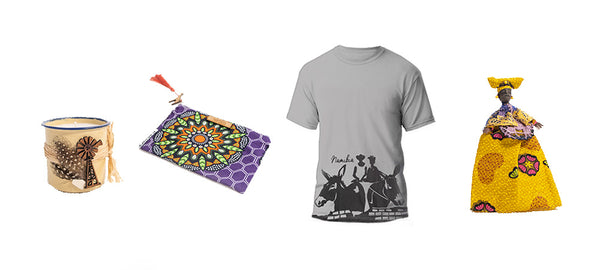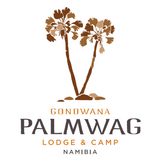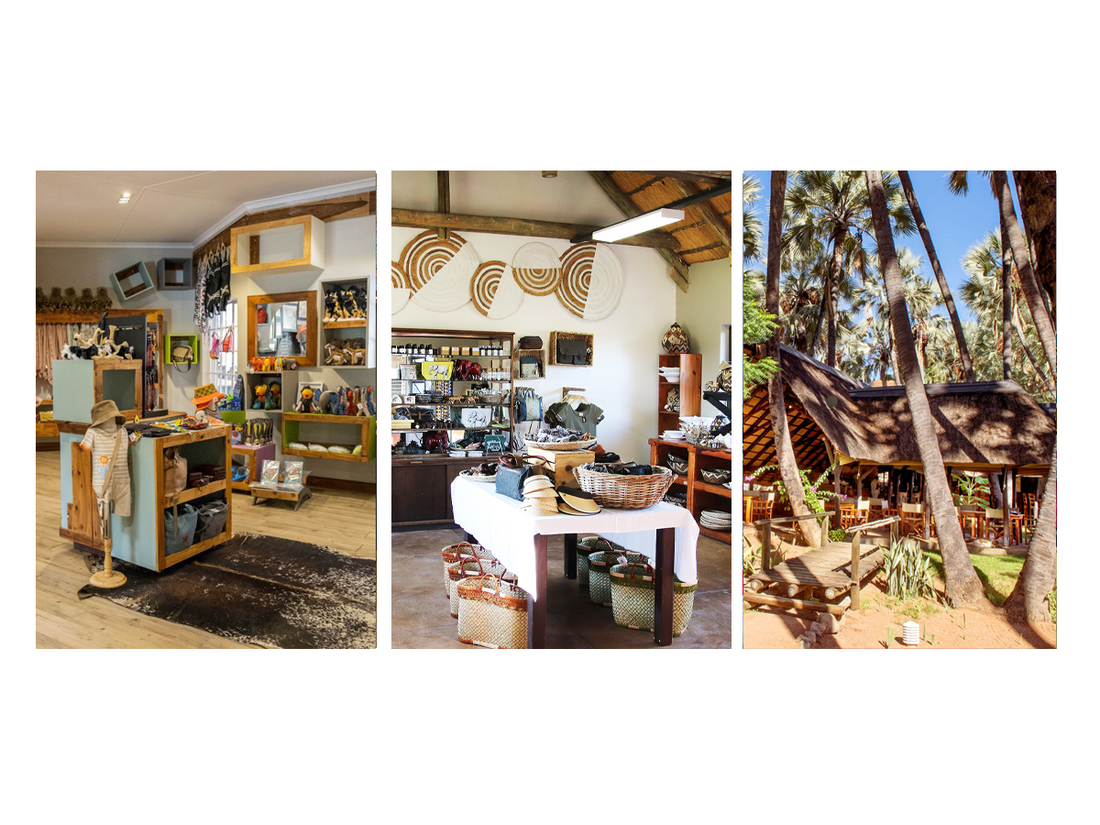It is said that Namibia is “Africa for beginners.” Miles and miles of well-maintained roads take travelers through ever changing landscapes of natural wonders and rich cultural experiences. First time visitors are pleasantly surprised by the clean city of Windhoek and its plethora of services and supermarkets as well as the network of tarred roads pointing in a variety of directions. This topped by the reliable availability of well stocked fuel stations along the way and the prospect of clean (Lodge) accommodation at your daily destination makes for comfortable exploration indeed.
For Africa to creep under your skin and into your blood happens amazingly fast this way. Soon you will be ready and eager to explore the roads that are less travelled, and the Northwestern region will be calling.
Starting off in what was previously known as Damaraland, Damara Mopane Lodge is a suitable base for exploration. Located at the foot of rolling hills and rocky outcrops, this Lodge has been laid out in a traditional labyrinth the way of a royal African village. Rows of colorful individual chalets each having their own vegetable and flower gardens, lie in half circles around a sprawling lawn area centered by one of the biggest free form pools in Namibia.
The Damara people, also known as “the people who walked here” were the biggest cultural group in this rugged landscape before being joined by Ovaherero and Riemvasmaakers. Surviving in this desert landscape depended on strong community support and thus the brand essence of this Lodge is “Hello Neighbour,” and the logo sports the remarkable face of a community member.

The assorted colors seen in the quilted “laslappie” dresses from the Damara/Nama and multilayered Ovaherero gowns are found everywhere in the Lodge interior, shop and the exterior of the rooms and garden walls. The carrots, cabbages, and eggplant are so happy in the soil here that they boost their natural colors even more, vying for the top spot.
One of my favorite things to do is to stroll along the cobblestone pathways in between the rooms. It is here where I have spotted the Rüppell's parrot before and I would very much like to see if I can tick off the tiny Carp’s tit this time. It is so peaceful in the center of the village; families are playing badminton on the lawn and the enormous pool that sports a small island is beckoning me to relax for a while and appreciate this verdant green bird paradise amongst the desert surroundings.

Strolling through the shop that reflects the same vibrant colors all over, I smile at the design on the t-shirts in the shelves that depict the donkey cart jockeys and donkeys that one sees all over Damara land. In the book section, numerous interesting books about the attractions such as the White Lady rock painting of Brandberg, the mysterious boulders of Spitzkoppe and the geology of this remarkably interesting region catch my eye. The glass display of the Minestones jewelry collection from local miners shines from a mile away.

Joining the guide on a walking tour up the hill towards the wooden deck for our sundowners, he points out a martial eagle soaring above us. From the top of the hill, the Lodge is nestled in between the mopane trees as if it has always belonged there. Tomorrow’s route will be one of a kind as I already feel right at home in the Kunene region.
The gravel roads today take me past the interesting Petrified Forest where I can touch Conifer trees that grew near rivers over two hundred million years ago and have since turned into fossilized stone. The enormous landscape keeps changing as I detour to the UNESCO heritage site of Twyfelfontein. The site lies on the banks of the Aba Huab River in the Huab valley and had an unreliable water fountain, hence the name given by the early settlers. Knowledgeable guides walk me from rock painting to rock engraving which were made by San as long as 10.000 years ago, and they are so internationally noteworthy because these were made without metal tools. Where the hunting scenes showed the expected bow and arrows and several types of antelopes, I could not believe my eyes when spotting a seal, a testimony of the San walking extremely long distances even to the ocean.
Onwards goes my journey through the Huab River where I see a group of desert elephants lazing about underneath enormous Ana trees. Pied crows ogle us from the safety of some rock formations, and I must squint my eyes whilst following the shade cast upon me, only to see a Bateleur on a mission in the clear blue sky. Passing alongside the massive Grootberg, I turn off towards my next destination for a few days.

In the middle of this harsh environment with red ochre burnt rocks, a sudden green blotch lined by Makalani palm trees appears like a desert oasis. The all-important spring in the tributary of the Uniab River, is roughly located in front of the restaurant and some of the rooms, currently attracting a kudu mother with her calves.

I sigh a breath of relief, for driving on these gnarly roads isn’t a small feat and one is mindful of getting a breakdown in the middle of nowhere. The Lodge is super welcoming with their structures seamlessly incorporated into the natural surroundings and I am given an ice-cold iced tea to quench my thirst. The staff points out the location of the Camping2Go tents and the campground, informing me that house guests are most welcome to order a pizza or burger from the Camp pool bar as a lighter alternative. The reception with its adjacent souvenir shop and activity station are all geared to make your stay at the end of the world (as it kind of feels), as comfortable as possible. As I sign up for black rhino tracking the next day, the staff directs me to a corner of the shop where one can get Leather Belt Pouches, t-shirts, and scarves to properly dress the part for this exciting excursion.

My time at Palmwag is invaluable as there is excitement around the corner. When Jimbo the kind, but not domesticated elephant decides to take a stroll through the Lodge, I jump with joy, as I truly feel like the early pioneers exploring the last frontier. Driving through the conservancy and seeing small settlements that have kraals for their livestock specially built to protect them from the desert lions, you are humbled for the life you have. When giraffes stroll by, one of their legs kicks a brown rounded rock. My guide cracks open the rock to reveal that the inside of the rock is either agate or some are quartz crystals!
After a delectable dinner buffet with everything my spoiled heart desires, with a magical sun set view over the river and the palm trees, I retreat to my spacious and comfortable cocoon that protects me from the raw and real elements for the night.
Epupa-Falls Omarunga Lodge & Camp
We travel not to escape life but so that life does not escape us, and this is on my mind as I proceed due North through even harsher but stunning countryside. With the Atlantic Ocean about 80km towards the west, the road passes Khowarib canyon, Sesfontein and via the Joubert Pass on to the capital of the Kunene region, Opuwo.
This remote region has various Ovahimba settlements, a tribe of semi-nomadic pastoralists who inhabit the previously called Kaokoland area. Some Kovahimba tribes, from Southern Angola are called Ovazemba and are distinguishable because they wear colorful beads instead of the metal and shell jewelry of the Ovahimba. Both groups can be seen walking around in Opuwo and only add to the adventurous feeling one has when driving this far in the northwest.
The scenery is alternating between rocky outcrops, shepherds’ trees that currently bear red fruits and then the Mopane bush slowly makes space for grassy plains with incredibly beautiful Adansonia digitata, commonly known as Baobab trees. This icon of the African continent is considered the “The tree of life” as paper and cloth can be made from the bark, and cosmetics and medicinal applications from the acidic edible fruit and seeds. Knowing that these magical giants can live up to three thousand years, I am very cognizant of the role they play, especially in this fragile ecosystem.
At this time of the year another rarity is visible: the Adenium boehmianum, or Bushman Poison, a bright pink flowered poisonous succulent endemic to northern Namibia and southern Angola. Its beauty is compelling yet dangerous and forms a stark contrast in this landscape.
The Zebra Mountains with their dolerite stripes indicate that I am getting closer to the valley carved out by the Kunene River and all the water brought down by its Angolan tributaries.
The expanse appearing in front of you when you drive over the last hill is literally breathtaking. Another oasis made up from fast flowing water lined by the waving Makalani palm trees are only the carrier of the impressive Epupa Falls that steals the show easily.

Omarunga Epupa-Falls Camp is centered amongst other camps along the river but frankly, is the “Epupa” on your cappuccino. This wordplay comes from the Otjiherero word used for the falls that means “foam.” Nestled under a dense forest of palm trees, the tented camp is just like paradise found. A people’s and bird paradise, that is.
Welcomed by the super friendly team, they really complement this oasis with their personal attention so that you start speaking in superlatives. Whether in for hiking around the falls, cultural village tours or if you are an avid birder, they have you sorted. The Lodge manager is a bird expert and points out a Goliath Heron perched on the Angolan side of the river. He is used to guest asking for assistance in spotting the elusive Rufous-Tailed Palm Thrush or the Cinderella Waxbill and derives much joy in sharing his hobby.

After an enriching cultural visit to a family of Ovahimba, I take a refreshing dip in the pool. The tiny shop carries a variety of practical items such as hats,cross over bags, t-shirts and reference books of this cultural hotspot.

From the view of my wooden deck, I find it hard to believe that I am at the outer fringe of Namibian soil and there is nothing my heart or soul desires. A typical pioneer inspired tent accommodation, green gardens and a life-giving river in front all add to my pensive state of mind. It was only 142 years ago when in 1881, the Thirstland trekkers crossed the river in front of me into Angola at Swartbooisdrif, in search for political autonomy and better quality of life. A momentous event in time lies in the eye of the beholder and I am grateful for my own journey through raw but real, life affirming, adventures in this part of the world.
Written by: Sonia Noirfalise-Corsini

